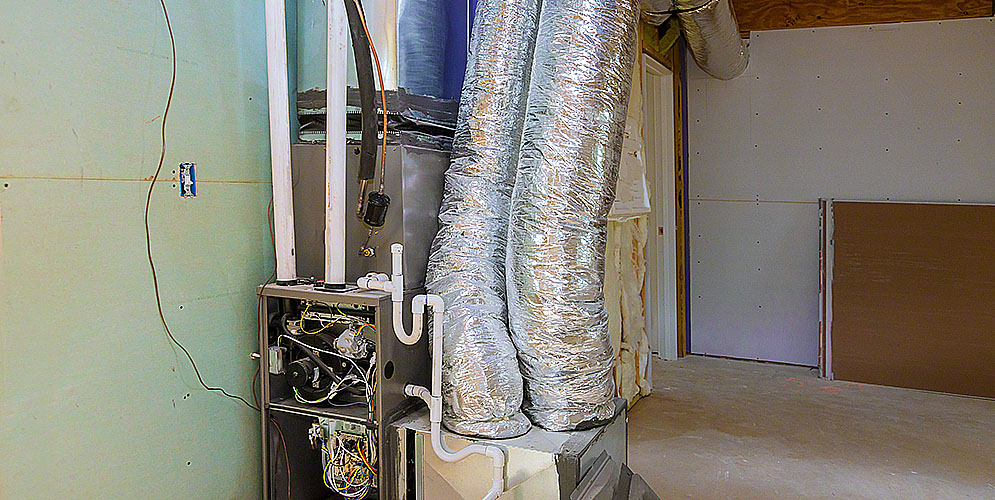
Why does your heater need care?
HVAC companies emphasize that taking proper care of your heating system can protect you from expensive fixes. Maintaining a heater usually requires only small efforts that make a big impact. By investing a little time to look after it, you can enjoy consistent performance while avoiding sudden malfunctions. With a handful of practical steps, you ensure your furnace or heating unit functions reliably, endures through colder seasons, and does not rack up unnecessary repair costs.
Ways to Help Your Heater Last Longer
Your heating system works tirelessly to keep indoor spaces warm. Because it often runs for many hours during cold weather, wear can accumulate and potentially shorten its overall life. Fortunately, you can extend its service by providing fundamental upkeep. Straightforward actions, such as switching out filters or tidying the area around the main heating component, can lead to improved performance. Over time, these easy habits also spare you the trouble and expense of dealing with major repairs.
Taking Care of Your Air Filter
Inside every furnace or heating system is a filter designed to trap dust and debris. When this filter becomes clogged, airflow slows down, forcing the heater to operate under stress. That strain increases the likelihood of breakdowns. By examining the filter monthly and replacing or cleaning it once it looks dirty, you help the system run more smoothly. Keeping that filter clear not only promotes good function but also leads to healthier indoor air for you and your family.
Why the Condition of the Heat Exchanger or Coils Matters
Heaters have elements—such as the heat exchanger in a furnace or heating coils in certain units—that release warmth throughout the home. If these parts get covered in grime, your heating system must work harder to maintain comfortable indoor temperatures. Over time, built-up residue can reduce efficiency. Checking these components periodically and gently removing dirt with a brush or vacuum can bring about better performance. Cleaner parts allow the heater to warm the house more quickly while using less energy.
Ensuring Proper Air Circulation
Balanced airflow is key to maintaining consistent, comfortable heat. Obstructions, such as furniture or curtains, can block vents and create cold spots, prompting your heater to run more often. Freeing those vents of any blockages helps ensure warm air circulates easily. It is also wise to inspect ductwork for signs of damage or buildup that can choke off airflow. As a result, every room in the house benefits from more even heating without overburdening the system.
Making Smart Thermostat Choices
Your thermostat governs how frequently and how long your furnace runs. Keeping it set too high can cause excessive operation, which accelerates wear. Many homeowners find that around 68°F strikes a good balance between comfort and energy efficiency. Additionally, it is often helpful to lower the thermostat when no one is at home, so the unit does not run at top capacity all day. Such a strategy lessens strain on your heater.
Scheduling Routine Maintenance
Professional furnace repair services Arlington can suggest effective ways to preserve your heating system’s life. During a maintenance visit, a trained technician evaluates critical parts, identifies small issues before they escalate, and cleans areas that collect dust. Detecting and addressing problems early reduces the chance of serious malfunctions. Regular tune-ups ultimately save you money and minimize headaches, letting you face winter weather without the worry of a sudden heater breakdown.
Keeping the Outdoor Unit Clear
Some heating systems, like heat pumps, have outdoor components that also need space to function properly. If weeds, leaves, or other debris pile up around that exterior unit, airflow becomes restricted, and the heater works harder than necessary. Clearing a buffer zone of about two feet around it allows the equipment to release heat and draw in fresh air without hindrance. Regularly checking and cleaning away clutter ensures that the system can operate at maximum efficiency.
Using Ceiling Fans to Support Heating
A simple trick to help your heater is to run a ceiling fan in reverse mode (often indicated by a switch on the fan). This setting pushes rising warm air back down toward the living space. By improving circulation, it allows you to set the thermostat a bit lower while still feeling comfortable. Reduced reliance on the furnace means the system cycles less frequently, easing the load on its internal components. This approach saves energy and prolongs heater life.
Sealing Windows and Doors Properly
Even well-heated air can escape your home if windows and doors are not sealed properly. This leads to drafts and colder indoor temperatures, pushing the heater to run longer. By sealing gaps or leaks with caulk and using weatherstripping, you prevent that warm air from leaking out. Doing so not only keeps rooms cozier but also cuts energy use, helping your heating unit last longer with fewer repairs.
Being Alert to Strange Noises
While a moderate hum or whoosh of air is normal for a heating system, banging, rattling, squealing, or grinding sounds indicate something is amiss. Possible reasons include worn belts, damaged bearings, or an unbalanced blower wheel. Identifying and repairing these issues early on can spare you from needing more significant parts replaced down the road. If you notice unusual noises, arrange an HVAC inspection to investigate the cause promptly.
Blocking Excess Chill with Blinds or Curtains
Cold drafts through windows can rapidly lower a room’s temperature, spurring the heater to cycle more often. One straightforward remedy is to use curtains or shades to keep out chilly air, especially during the coldest times of the day or night. This small measure lets the home stay warmer without burdening the heater. In turn, the system’s overall stress is reduced, and it can operate more smoothly.
Addressing Short Cycling Problems
Short cycling refers to a heater switching on and off too quickly, never running through a complete heating cycle. This can happen if the system is oversized for the house or if a faulty thermostat confuses the controls. Each start-stop event places undue stress on parts. If you suspect short cycling, it is wise to consult a professional for a proper assessment. Resolving the cause can protect the furnace’s critical components and extend its life.
Watching Your Fuel or Gas Levels
Proper fuel supply is vital for furnaces that run on gas, oil, or propane. If levels drop too low, your system may strain to produce heat, or it may not turn on at all. Low supply can also damage certain parts, such as the burner assembly. Monitoring these resources—alongside ensuring that gas connections or lines have no leaks—helps the heater perform consistently. If you detect odors or suspect a problem, consider contacting a heating specialist right away.
Conclusion
Safeguarding your heating system does not demand much effort, but the benefits are substantial. By consistently checking filters, watching for odd sounds, and scheduling professional heat pump repair services McLean, you significantly reduce the likelihood of breakdowns. Maintaining open space around the unit and sealing any cold leaks also contributes to its longevity. If you are attentive to abrupt changes in performance or rising energy costs, you can address troubles quickly. In the end, a properly cared-for heater supplies steady warmth through the cold season, proving itself a solid and cost-effective investment for the home.
